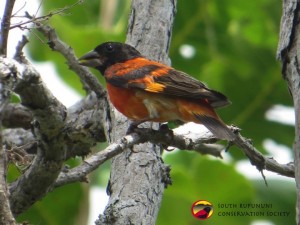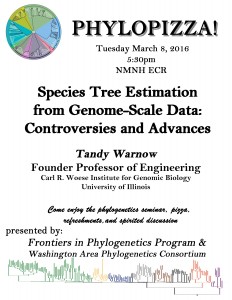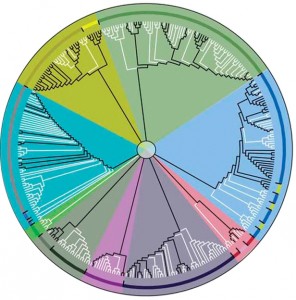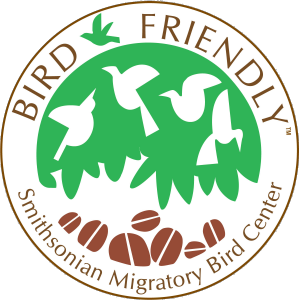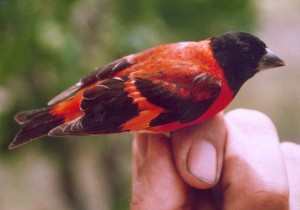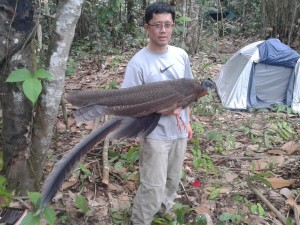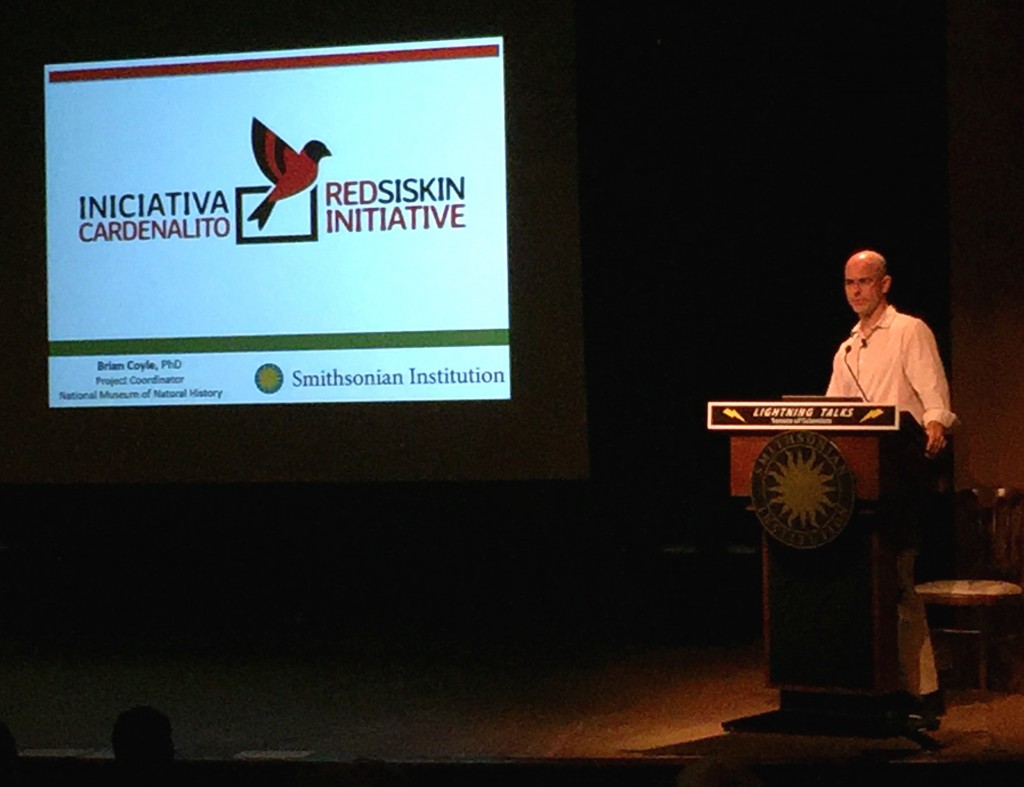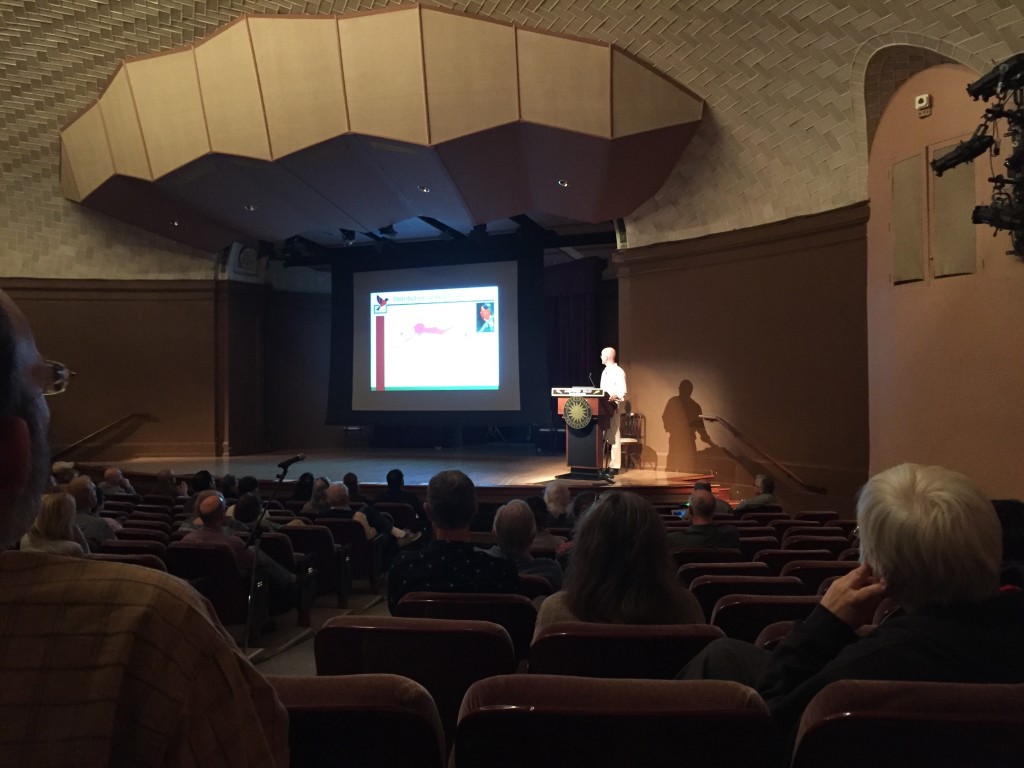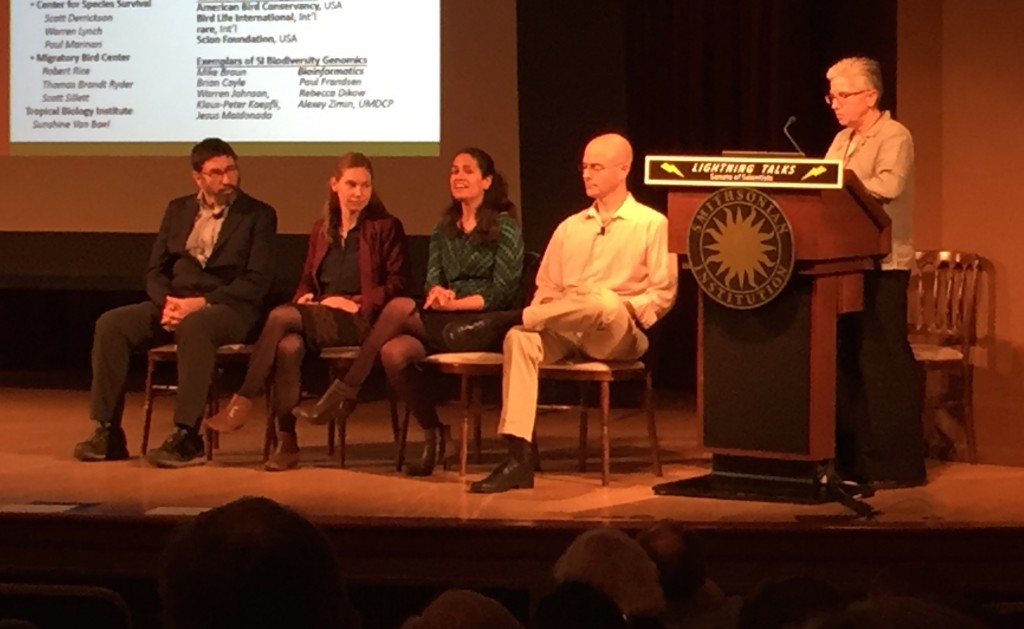The Braun Lab was happy to host Troy Murphy of Trinity University for a short-term visit to begin a collaboration on avian hybrid zones. You can find out more about Dr. Murphy here. See below for a description of an internship related to this project that is available through the NHRE program.
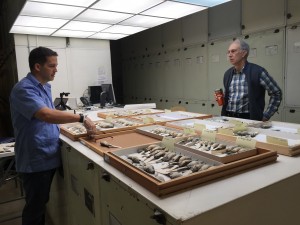
Mike and Troy working in the NMNH collections
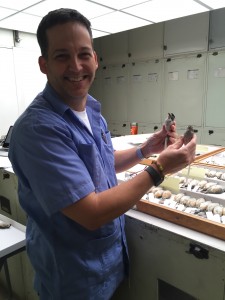
Troy Murphy
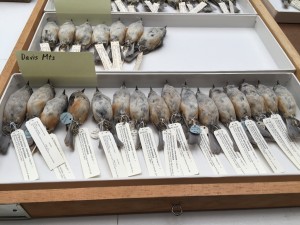
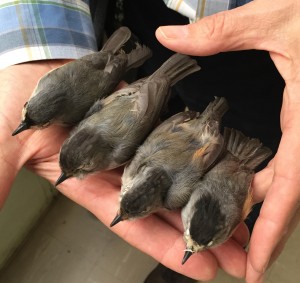
Hybrid variants
Project Title: Morphological variation across an avian hybrid zone: plumage coloration and mensural traits where two species meet.
Description: Within stable hybrid zones, there is a mix of genotypic contributions from the two parent species and hybrids often express intermediate and highly variable phenotypes. One such case of persistent hybridization is seen in avian hybrid zones in the great plains of North America. These areas of stable contact between parental species provide ‘natural laboratories’ where we are able to study phenotypic variation and the selective pressures leading to reproductive isolation. The black-crested titmouse (Baeolophus atricristatus) hybridizes with the tufted titmouse (B. bicolor) within a narrow zone in Texas and southwestern Oklahoma. Behavioral evidence indicates that the black-crested titmouse uses its large black crest as an aggressive signal during competition, while the crest of the less ornamented tufted titmouse is far smaller and grey, and we hypothesize, based on its reduced size, that the tufted’s crest plays a less important role as a signal of dominance. Body size is another variable often closely associated with dominance. We will test how titmouse hybrids, as well as the neighboring parental species, vary across the hybrid zone in body size, crest size and coloration. This will represent the first step in a project that will combine molecular and behavioral approaches to assess whether this communication signal of dominance increases reproductive isolation in this system. We will use round skins from the NMNH collection to measure crest length and coloration, as well as several variables related to body size. Crest length will be assessed via digital photography, and color will be assessed with a spectrometer paired with software that utilizes an avian visual model of color vision. By first characterizing plumage differences and body size, we will then be able to compare signal phenotypes to a genetic hybrid index (to be developed as part of a bigger project), map clinal transitions across the hybrid zone in all these traits and thus dissect introgression in fine detail.
